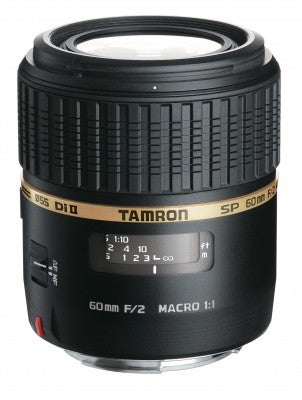Excellent ergonomics and a fast f/2 aperture makes this a serious third-party macro option
Tamron SP AF 60mm f/2 Di-II LD [IF] Macro Review
Macro”]If an APS-C camera records the same composition as a full-frame macro lens then does that mean that it too is a macro lens? The answer is a firm ‘no’ because the APS-C sensor is smaller, so the image is recorded on a smaller scale.
The best way to think about true macro performance in practice is to consider the closest image that could be taken of a ruler. Using a full-frame camera the included markings (across the width of the frame) would amount to 36mm, because that is the width of the sensor and in a true macro photograph the image is recorded the same size as the object. For the same reason, the included markings across an APS-C image should be about 24mm but some APS-C lenses cheekily claim the ‘macro’ label if they are limited to a wider view and include 36mm or slightly more at their closest setting.
Tamron’s 60mm does not need to cheat in this way: it is a true macro lens that is genuinely capable of a 1:1 reproduction ratio and also benefits from a fast f/2 aperture. Admittedly, its wide-open performance is a tad weak but the f/2 aperture gives a bright viewfinder and stopping-down to just f/2.8 pushes the lens into the realms of excellent resolution figures.
Ergonomically there is nothing to fault. Internal focusing means there is no need to keep fingers clear of the perfectly-located focusing ring and manual intervention can be applied effortlessly at any time. The AF/MF mode switch falls comfortably under the user’s left thumb and there is a focused-distance window if needed. All that is missing is a focus-limiter.
This last point is important because the AF system is not especially brisk and is also a bit noisy, so having the lens hunt right across its extended distance range can become annoying at times. This is not a big issue but it is an area that might be improved in a future version.
Though some chromatic aberration was seen in high-contrast technical shots, real-world pictures were fine.
As well as being a very useful macro lens, Tamron’s 60mm f/2 is a prime contender for portrait photography as it will give the same perspective as a 90mm lens that is used on a full-frame camera, and 85-135mm is considered to be the ideal focal range for portraiture.

Macro”]
Verdict
There is some variation in price depending on where you buy this lens but anything around £350-£400 represents good value for money if you are in the market for a genuine macro lens that can also double-up for high-quality general-purpose photography.





